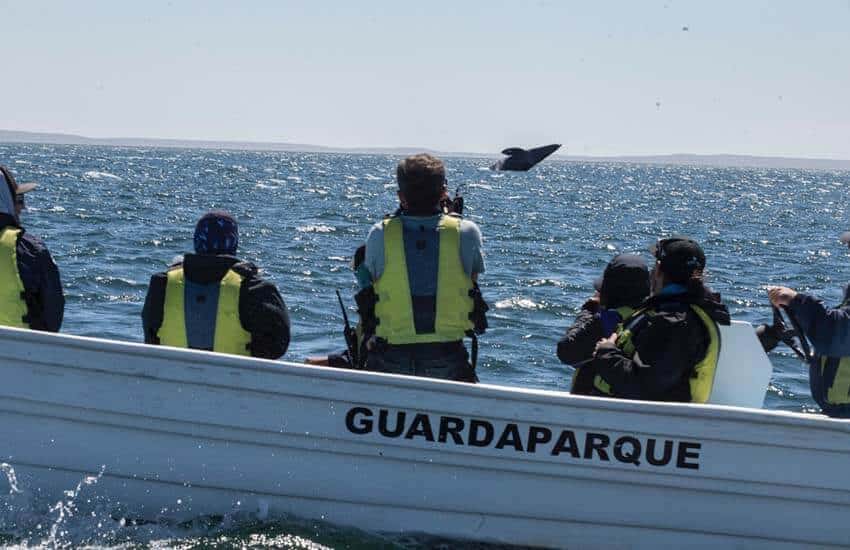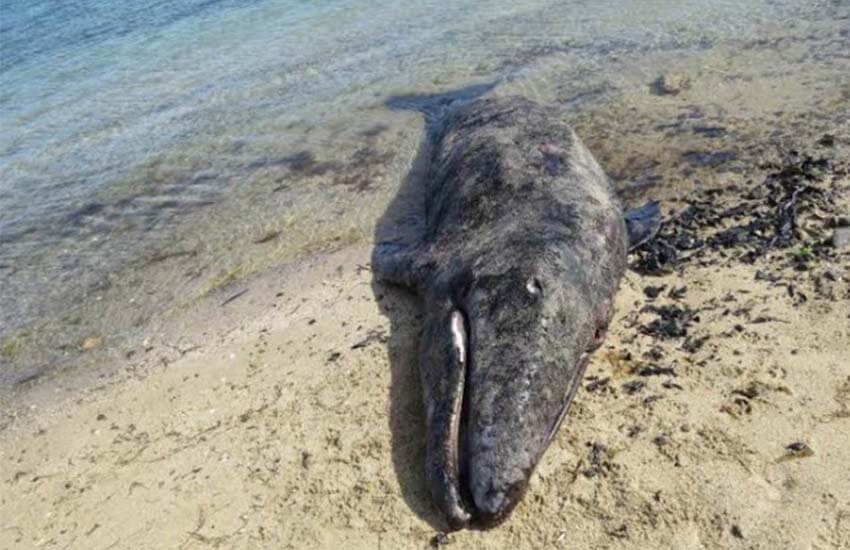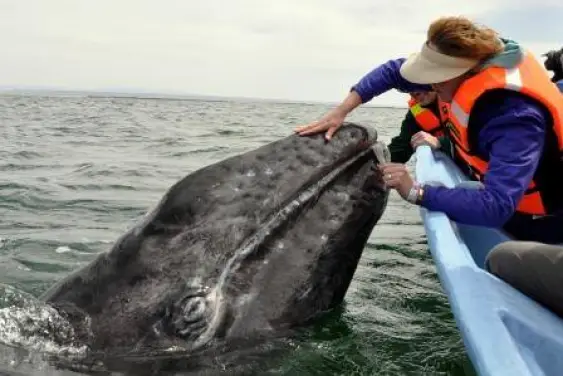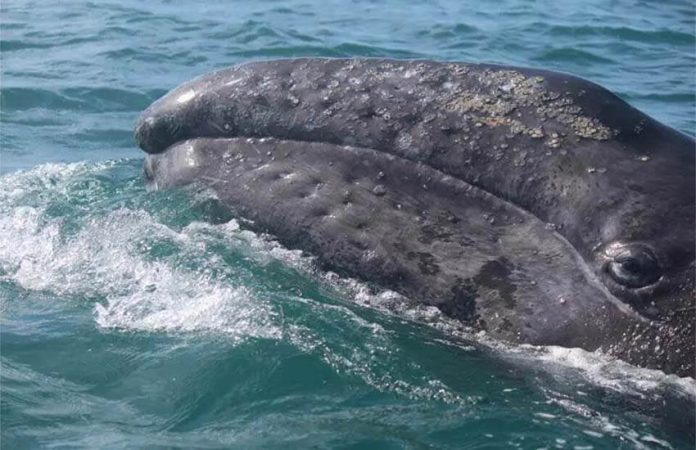Counting whales is a science in a Baja California Sur whale sanctuary, where almost 300 gray whale calves were born during the 2021–2022 birthing and mating season, according to the National Commission for Natural Protected Areas (Conanp).
Rangers conduct nine censuses in the El Vizcaíno Whale Sanctuary every season, counting the mammals as they observe them breaching and expelling air through their blowholes.
Conanp’s highest estimate of the number of gray whales in the sanctuary this season was that made in February when its rangers counted 948, including 290 females and an equal number of calves.

Other whales migrated more than 9,000 kilometers from the Bering Sea near Alaska and Russia to mate in the sanctuary, part of the UNESCO-protected El Vizcaíno Biosphere Reserve, which is located off the western coast of northern Baja California Sur.
Everardo Mariano Melendez, director of the reserve, described the gray whales that arrive every year as “Mexican whales.”
“They’re born in Mexico and they reproduce in Mexico,” he told a Milenio newspaper journalist who recently accompanied rangers as they conducted a census.
After spending a few months off the coast of the Baja peninsula, they return to northern feeding grounds, Melendez said.
Noé López Paz, a biologist and Conanp ranger, said the whales begin their return migration after the new mothers teach their offspring an essential life skill.
“The censuses and monitoring trips show that mom interacts with her calf and shows it how to breathe for two or three months, and then they migrate north,” he said.
López told Milenio that climate change is one of the greatest threats to gray whales. Fifteen whales, including calves, were found dead by rangers this year. CNN said in a recent report that many thousands of Pacific gray whales have likely died in recent years.
“While [the] underlying cause remains elusive, many researchers point to the conditions in and around a rapidly changing Arctic Ocean. The retreating ice sheet, warming waters and a shifting ecosystem may be decimating gray whales,” the report said.

In making their whale number estimates, Conanp park rangers count whales’ air expulsions, or “blows,” one by one as they travel around the sanctuary on boats. A single census is conducted over a period of five hours.
Gabriel Zaragoza Aguilar, a Conanp ranger who has participated in whale counts for 25 years, told Milenio that there are two observers, a data recorder and a skipper in each of the two boats that simultaneously conduct a census.
Rangers identify a mother and calf either by seeing them directly or observing “one large blow and one small one“ from a greater distance, he said.
With the use of binoculars, “we can observe their behavior from far away,” Zaragoza said. “… When they’re asleep, they float on the surface,” he explained.
The ranger said the peak mating season is January and early February. “You see three, four whales circling around, and sometimes they expose their parts,” he said.
José Buelna Grado, another Conanp ranger, said the highest number of whales counted in a single census was 2,721 in the 2011—2012 season, or almost triple the 2021–2022 high.
López said that over 1,000 calves have been born during some seasons in the Ojo de Liebre lagoon, which is part of the El Vizcaíno sanctuary. Environmental officials estimated in 2019 that more than 25,000 gray whales had been born in the lagoons of Baja California Sur in the past 30 years.
The whales attract tourists to the sanctuary for sighting trips every year. According to Conanp, some 2,650 people — including tour operators, hoteliers and restaurateurs — benefit from the tourism activity, which annually injects approximately US $3 million into the local economy.

The gray whales are considered friendly given that they breach in close proximity to vessels and appear to play with or put on a show for onlookers. However, they can also be dangerous: a Canadian tourist died in 2015 after a gray whale struck a tour boat off the coast of Cabo San Lucas in Baja California Sur.
Gray whales are the eighth largest whale species. According to National Geographic, they grow up to 50 feet or 15 meters and weigh 30 to 40 tonnes.
With reports from Milenio
